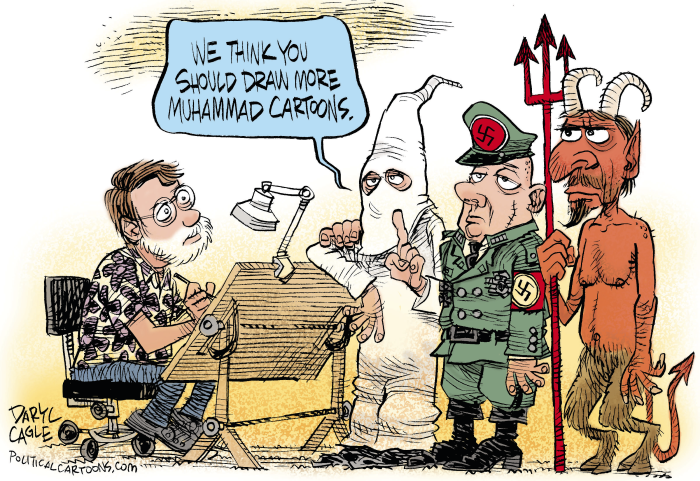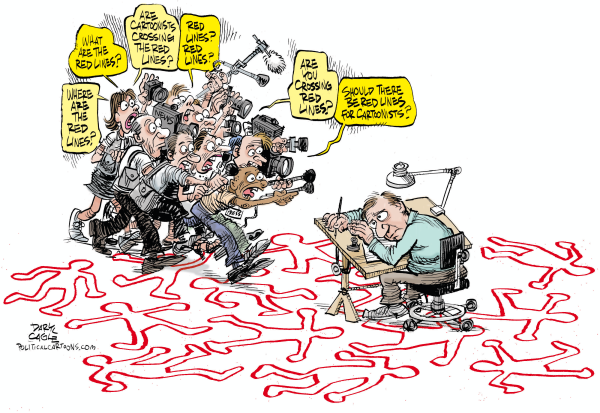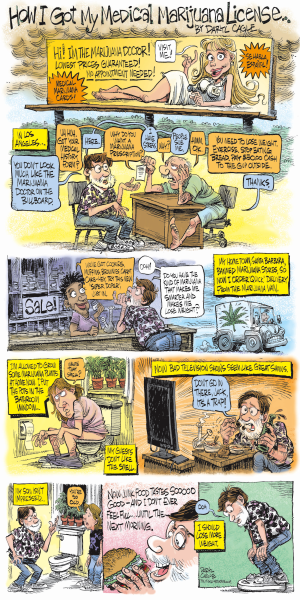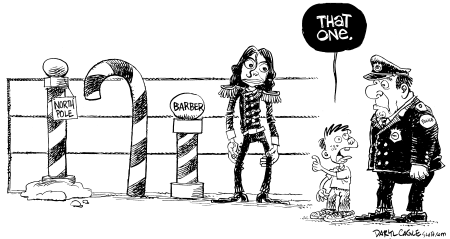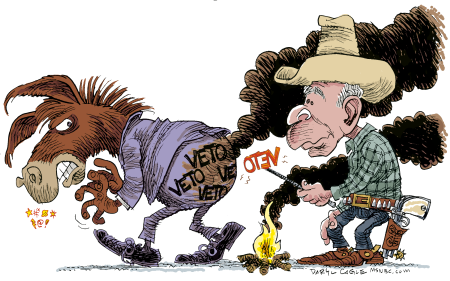
My home state has been kicking the budget can down the road for years and is finally running out of road. California is facing its biggest budget deficit ever — a staggering $21 billion, or 49.3 percent of the state’s general revenue fund.
As a political cartoonist I look for bad guys to skewer in my cartoons. In California there are bad guys everywhere to be blamed for our fiscal mess: our good-for-nothing Governor Schwarzenegger; our greedy, irresponsible legislature; the media that ignores state issues; and the electorate who votes for more debt to fund wasteful projects like multi-billion dollar trains people don’t want to use. Voters have approved more bond debt than the state can sell. In short, everyone is a bad guy.
Different groups point to their own favorite villains. Liberals like to blame Proposition 13 for limiting the legislature’s ability to raise taxes, even though our taxes are crazy high. Conservatives like to blame labor unions for milking the state dry, and liberals for chasing away business with taxes and regulations. The media likes to blame voters who vote for constitutional amendments that micromanage our dysfunctional legislature. Populists want to tax the rich more, even though the state has gotten into trouble by relying too much on income taxes and crashed when the incomes of the rich fell with the current recession.
But cash-flow isn’t California’s only problem — we also have a water crisis. In Los Angeles I’m limited to watering my lawn after 5:00pm on Monday and Thursday, and I struggle with a low-flow toilet, that has to be flushed three times to work, while rice farmers flood their farms with cheap subsidized water and the legislature has approved a whopping $11 billion bond measure, laced with porky giveaways, to fix the “water problem.” California would have plenty of water and money to go around if we had leaders who could step up and make some serious choices.
My favorite California money pits are the state commissions; out-of-work legislators, who have been term-limited out of office, are appointed to these six figure, do-nothing jobs while they relax and wait for their next electoral opportunities.
We have colorful problems and goofy characters who should make great cartoon characters for me, but they all share the blame so equally, and are so uninteresting as individuals, that my life as a California editorial cartoonist is more frustrating than it should be.
Of course, this all leads me to suggest that we change our state flag.
The bear on our flag might be the only state government character who stands blame-free, and who looks good in a cartoon. We should keep the bear — but let’s change him every so often to let the government know how we feel about them. Here are a few of my suggestions for a new state flag.
California’s governor and legislature could run a few of these flags up the flagpole, and see who salutes them.
Daryl Cagle is a political cartoonist and blogger for MSNBC.com; he is a past president of the National Cartoonists Society and his cartoons as well as 50 other cartoonists, at www.caglecartoons.com are syndicated to more than 850 newspapers, including the paper you are reading. Daryl’s books “The BIG Book of Campaign 2008 Political Cartoons” and “The Best Political Cartoons of the Year, 2010 Edition” are available in bookstores now.



